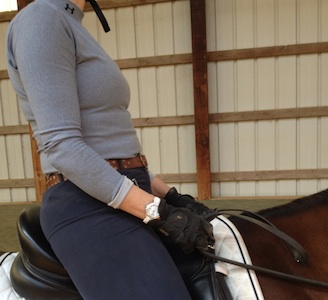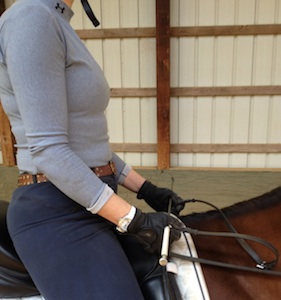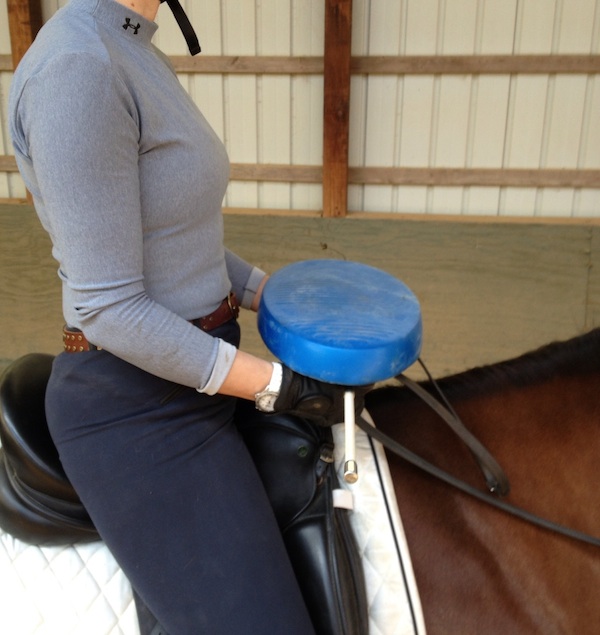Do your hands lean on your horse’s mouth? Unconsciously drop one or both hands? Lean forward and lower your hands when using the reins? Does your horse rush when you ask for downward transitions? Learning to carry the weight of your forearms and hands can help you stay away from the neck and avoid leaning on your horse’s mouth. This will make your rein aids more effective and your horse more responsive.

Many riders are taught to keep the hands low, close to the horse. Ideally, when riding on the flat the bottom of the pinky finger should rest on the withers. However, the exact position should be determined by your arm conformation, your horse’s neck set and the riding style you choose (hunters, dressage, western, etc.). No matter where you place them, it is important to carry your hands. In other words, they need to feel connected to the rest of your body, not sit there like limp dead fish.
Riding with limp forearms and hands has an adverse affect at all gaits and disciplines because your hands weight on the horse’s mouth. To you this would feel like someone with an extremely limp handshake– not pleasant at all! If you are one of those people who have a limp handshake it is time to firm it up for your horse’s sake.
As an instructor from the ground it is easy to tell if the rider’ hand is too limp and understand why the horse won’t like the rein contact. Simply take ahold of one rein at a time and pull a little. Sense the weight of the rider’s forearm and hand. Does the arm come toward you without any resistance? Does if feel heavy or floppy as if these body parts are no longer connected to the rest of the rider? Does the rein feel vacant? You might discover that the rider has the opposite problem and grabs at the rein but this solution to that is another Fix!
To solve a limp contact, do the following exercise. Start by holding a short whip between your two hands while holding the

reins. Hold the whip under your thumbs with the reins held in two hands as normal. After getting accustomed to this add a lightweight pad on top of the whip. A gardener’s kneeling pad or in this case a balance cushion works fine. You want something that isn’t very heavy but at the same time will make you pay attention to your forearms and hands. Walk with the pad on top of the whip.
Now imagine placing a glass of your favorite beverage on top of the pad. If you don’t carry the pad you will spill it all over your horse. Can you keep the pad level so that you don’t spill your drink? Feel how you have to maintain a certain amount of tone in your forearms and hands to balance the pad. Be careful not to stiffen your elbows. They still need to be able to open and close in order to follow your horse’s mouth.

If you have short upper arms you may discover that you have to carry your hands above the withers in order to keep the pad level. If you have very long arms you may have to bend your elbow more that usual to clear the horse’s withers with the pad. During this exercise having your hands higher than normal is fine. The key is to sense that your have to maintain tone in the forearms and hands.
Remove the pad and ride with your hands lower while maintaining a firm feeling through your arms to the horse’s mouth – like a firm handshake and notice what happens to your transitions. When your arms are connected your horse can hear your seat much more clearly.
Use this Murdoch Minute to connect your arms and hands to the rest of your body so that your horse feels a kind yet firm connection through the reins and always remember to enjoy the ride!




